Animal Life (Extra Information-2) Class 4 Notes Science
ANIMAL LIFE
FUNDAMENTALS
- Habitat is the surrounding in which animals lives.
- Animal has to adapt by undergoing changes in body structures so survive in changing environmental conditions and the habitat. These changes are called adaptation, which are slow and gradual and take place over a period of times.
- Body coverings in different animals, help them in many ways
Different Body Coverings and Their Functions
S. No. | Animals | Functions | Body Coverings |
1. | Snail, turtle and tortoise | Protects the body from injury and from the attack of enemies. | Shell |
2. | Fish and reptiles | Protects the body | Scales |
3. | Birds | Helps them in flying and in keeping their body warm | Feathers |
4. | Mammals | Protects their body and keep them warm | Hair and fur |
- Different animals have varied feeding habits and accordingly they have their adaptations.
Adaptations of Animals According to Feeding Habit
S. No. | Feeding habit | Adaptations in body parts | Animals |
1. | Herbivores | Sharp front teeth and large flat back teeth | Cow, Sheep, Goat, Rabbit |
2. | Carnivores | Sharp pointed front teeth, strong back teeth, sharp strong claws and hooked beak. | Lion, wolf, frog, lizard, snake, owl, eagle |
3. | Omnivores | Well-developed teeth. | Human, bear, rat |
4. | Sucking | Proboscis in butterfly, honey bees, sucker in leech, long beak in sunbird | Butterfly, leech, honeybee, sun-bird |
5. | Insectivores | Long tongue | Chameleon, frog , lizard |
S. No. | Animals | Breathing organs |
1. | Mammals, birds, amphibians and reptiles | Lungs |
2. | Frog while in water and earthworm | Moist skin |
3. | Grasshopper, cockroach | Spiracles or air holes |
4. | Fish, tadpoles and prawns | Gills |
FISHES
Fishes are first vertebrates which came 550 million years ago; adapted in different conditions of the earth, inspite of extinct of Dinosaur, they maintained their existence successfully.
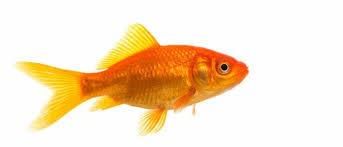
Fig: A Fish
Adaptation in fishes
- Streamlined body to reduce water resistance in swimming
- Gills as respiratory organ to take dissolved oxygen from water.
- Fins and tails for locomotion.
- Scales to prevent water entry into the body.
- Air bladder to swim in the water.
Poisonous fish
Puffer fish has poison in its internal organ. Poison is Tetrodotoxin which is much more poisonous than cyanide.
Piranha fish
Piranha is the most dangerous and aggressive fish found in fresh water. They can even kill and eat big mammals in minutes, when they attack in group.

Fig: The most dangerous and aggresive fish : Piranha fish
Amphibians
Animals that live both on land and water are called amphibians.
- They are cold blooded as they can changes their body temperature according to environment.
- They undergo hibernation process to avoid extreme cold in winter season.
- Gills, lungs and skin are the respiratory organs.
- Frogs can breathe in water through moist skin and through lungs on land.
- Japanese salamander is the largest amphibian of size more than 1.5 meter.
- Poisonous arrow frog is one of the most poisonous animals on the earth.
- Flying frog lives on trees, they have sticky pad in their toes for gliding on trees.
- Female frog lays hundreds of eggs called spawn, in water. Tadpole hatches from this egg. It has tail to swim and gills to breathe in water.
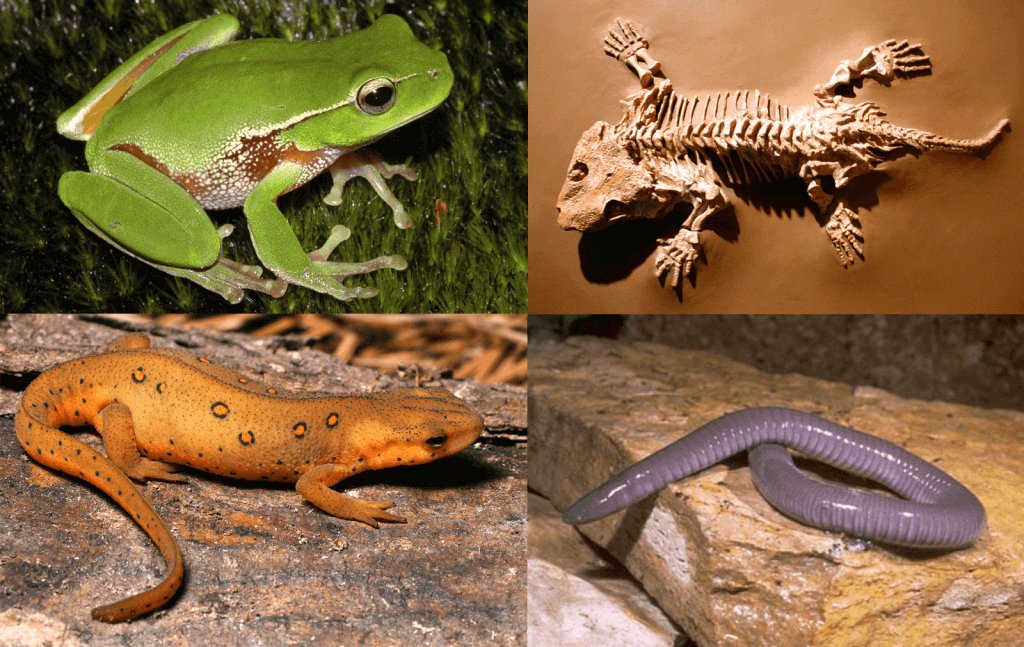 Fig: Amphibians
Fig: Amphibians
BIRDS
More than 9000 kinds of the birds are there. Size of birds varies from largest African ostrich (taller than man) to the smallest humming bird of 3 – 4 cm length.
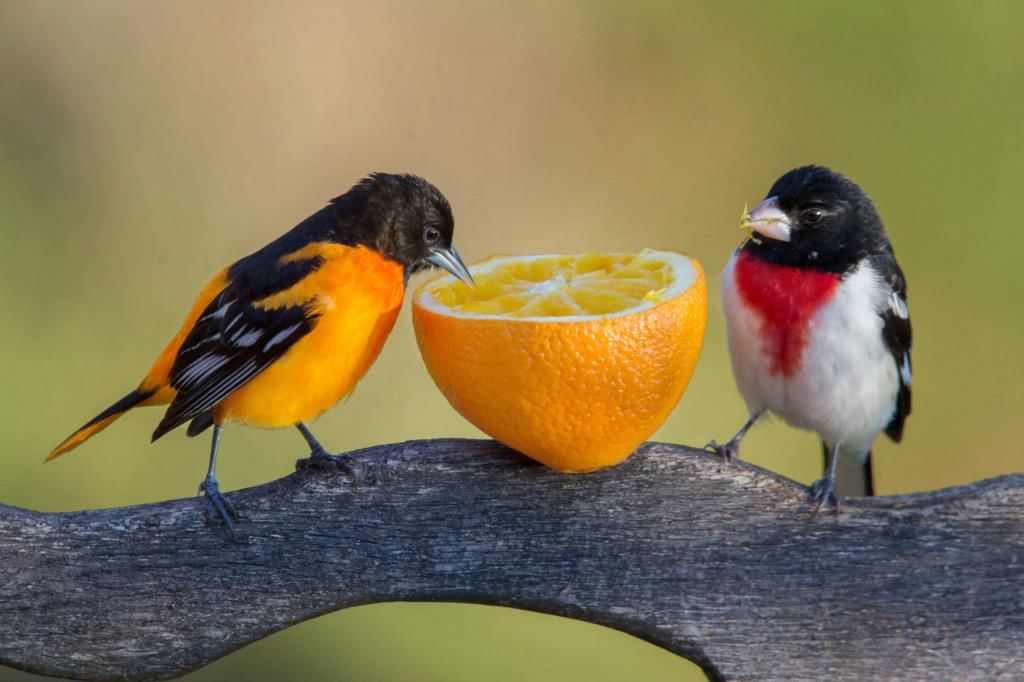 Fig: Birds
Fig: Birds
- Birds have light and hollow strong bones and skull.
- They have hard beak or bill instead of teeth or mouth.
- They have wings covered feathers instead of hand.
- Tail of birds is made up of feathers and acts like the rudder of a boat to change the direction during flight.
- When a wing of bird move upwards it is called upstroke movement and when wings move downwards is called down stroke movement.
- Flightless birds are Kiwi, Ostrich and Penguin
- Water birds are Ducks, Swan, Albatross, Gulls, Pelicans
- Walking birds are Hen, Peacock
- Birds flying to great heights are Eagles and vultures
- Bird flying at low heights is Sparrow
Distinct Feature of Birds
- Albatross: Is the largest flying bird with largest wing span.
- Duck: Produces quacking sound and has strainers to facilitate removal of mud and water leaving behind tiny animals in the mouth.
- Parrot: Can mimic human speech, has hooked beak to crack nuts and hard fruits and also helps in climbing.
- Kiwi: Flightless bird, National symbol of New Zealand. An endangered species moves on legs.
- Ostrich: Large flightless bird, its eggs is the largest of all eggs.
- Peacock: National Bird of India, colorful and large
- Woodpecker: Chisel shaped strong and heavy beaks, makes hole in trunk of trees.
- Kingfisher: Catches fish from the river.
- Penguin: Aquatic flightless birds, found in Antartica, wings modified into flippers allowing them to swim in water.
Migration in Birds
Some birds leave their home during winter to find food in warmer places, called migration. The arctic tern breeds during summer and then travels a distance of 17,000km to Antarctic in the south, again goes back to same places to breed, e.g., Siberian crane migrates to India, during winter and goes back.
REPTILES
Reptiles are cold blooded animals having dry skin covered with scales. Reptiles are air breathing animals.
- Alligators and Crocodile are large in size. They have webbed feet to walk on land and long tail to swim in water. They are hunters with huge and lot of sharp teeth to tear their prey.
- Alligators have a shorter snout than crocodile, but crocodile's teeth stick out when it's mouth is closed.
 Fig: Reptiles
Fig: Reptiles
LIZARDS
There are 3,000 species of lizard. They have long tails which can be shaded in unfavorable conditions.
- Gila monsters and Mexican beaded lizard are poisonous.
- Komodo dragon is the largest lizard
SNAKE
There are 2,500 species of snakes. They are found everywhere except in Antartica.
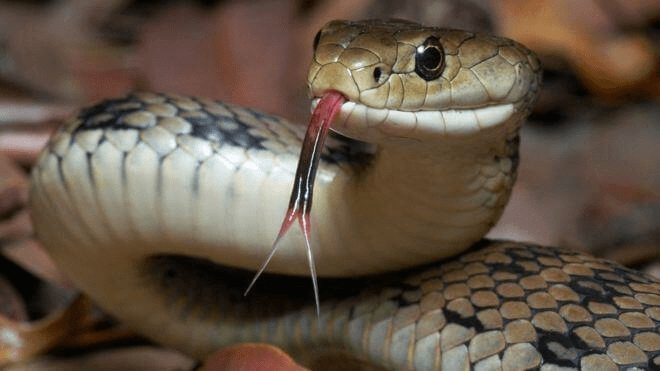 Fig: A Snake
Fig: A Snake
- Snakes don't have limbs, move by slithering around the ground.
- Snakes shed their skin if damaged or worn out; the process is called moulting.
- Snakes have teeth but not for chewing and hence it swallows it prey.
- Cobra, Karait, Viper the poisonous snake. All sea snakes are also poisonous.
- Python and Boa can coil around prey and squeeze it to stop breathing.
- Black Mamba is the fastest snake, which live in Africa. Its speed is 1 km/hr.
Adaptation in reptiles:
- Moulting
- Hibernation
- Camouflage
- Regeneration
- Chameleon is a type of lizard that can change its colour to escape from predators and to get near to its prey.
- Poisonous snakes have canalized teeth for inoculation of poison is called fangs.
MAMMALS:
- They are warm blooded and have hair on the body, sweat glands to cool the body by talking heat from the body.
- Mammals give birth to young one.
- They have mammary glands to feed them.
- Mammals have flippers and fins (if aquatic) instead of legs for swimming.
- Bat is the smallest mammal of length less than 2 cm.
- Blue whale is the biggest mammal in terms of size.
- Whale, Dolphin and Porpoises live in water. They have a layer of adipose tissue under their skin to keep them warm instead of fur or tissue, come to the surface for breathing, have nostril on head.
- Seal, marine mammal, has streamlined body adapted to marine living, fatty blubber under their skin to keep them warm.
- Squirrel, Mice, Porcupine are rodents. They have large incisor teeth to gnaw nuts and wood. Squirrels have long bushy tails, whereas mice have long thin tail. Both undergo hibernation in winter. Porcupine has sharp quills on the body for protection.
- Platypus, Echidna lay eggs, baby is hatched from egg.
- Kangaroo, Koala and Wombats give birth to underdeveloped babies which stay in the pouch until they become fully developed. Pouches have mammary glands for feeding and nourishment.
- Human, Ape, Monkey, Gorilla. Primates have well developed hand and legs with finger and toes. Opposable thumb for grabbing things. Highly developed brain can to understand complex language. They have long gestation period.
- Tiger, Zebra and Cheetah have stripes on their body to help them hide in grasses and leaves, so that they can easily kill their prey
- Monkeys, Chimpanzee live on trees and have prehensile tail and opposable thumb to hold branches of the tree.
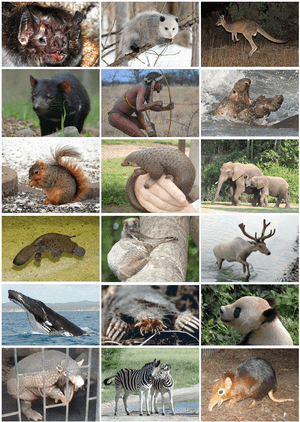
Fig: Mammals Diversity
|
11 videos|15 docs|8 tests
|
FAQs on Animal Life (Extra Information-2) Class 4 Notes Science
| 1. What are some examples of animal adaptations? |  |
| 2. How do animals reproduce? |  |
| 3. What are the different types of animal diets? |  |
| 4. How do animals communicate with each other? |  |
| 5. What are some examples of animal habitats? |  |
|
11 videos|15 docs|8 tests
|



















